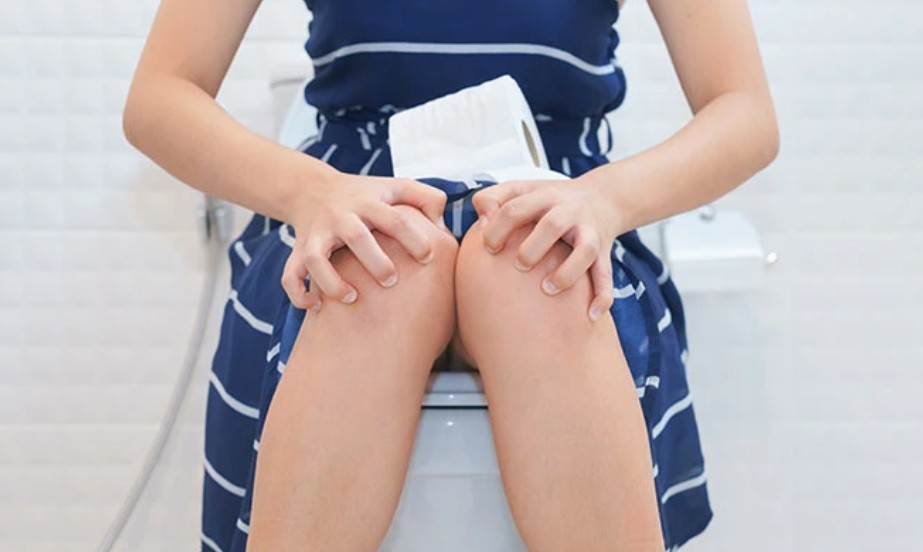🐛 Worm Removal from the Field of Master Mind Health (MMH) 🌿
Shared from the research of: Joseph Mercado 👨
Article Authors: Dr. Todd Watts and Dr. Jay Davidson 👱👨
Content Contributor: Microbe Formulas 🌎
To: Health Lover 🌱
Blog Post #1049 📌
Re: Rope Worm 🐛
Date and Time: Friday, October, 23, 2020 at 11:49 a.m. ⏰
Dear Health Lover,
Sometimes when you do a parasite cleanse, rubbery rope-like strands appear in your stools.
Yet, they’re not any type of parasite previously identified by scientists.
In fact, their true identity is a bit of a mystery.
Two leading theories have evolved to explain the stringy globs. Some people speculate that they’re parasites, dubbed rope worms.
Others believe they’re intestinal debris called mucoid plaque that’s finally exiting your gut.
Unfortunately, little science exists to confirm what it is.
Here’s a closer look at this peculiar substance, as well as the theories and evidence used to explain it.
Most importantly, you’ll also learn what to do about it.
What’s Been Observed?
People have reported passing rubbery, brownish-colored strands in their stools.
Some of this stringy stuff is a few feet long. This typically happens during parasite cleanses, water fasting, enemas, colonics, and other detox regimens.
In case you’re wondering, colonics are more thorough colon flushes than enemas.
Additionally, colonics are given by trained professionals rather than being self-administered.
The so-called rope worms observed with colonics and parasite cleanses aren’t a recent phenomenon.
In the 1930s, an article in the Journal of the American Medical Association noted people passing unsightly materials after colonics.
They were described as “brown or blackish sheets, strings, and rolled-up wormlike masses of tough mucus with a rotten or dead-fish odor.”
The article also reported that ill people who purged this unpleasant, stringy material had relief of their symptoms.
In other words, it’s better out than in your body.
Still, some naysayers believe that what people are seeing is merely components of their health protocol.
For example, it’s been said to be supplemental psyllium husk fiber. But how can that be if you haven’t taken any?
Similarly, some skeptics say that what people are seeing is just Mimosa pudica seed.
If that were true, everyone using Mimosa pudica seed for parasite cleansing would see rope worm. But they don’t.
And some people only see the ropy strands for a short time while taking Mimosa pudica seed.
Though scientists aren’t sure what the material is, there’s no denying that people are passing something.
If you’ve experienced this yourself, you know it’s real — whatever it may be.
Read on for details about the two leading theories used to explain this peculiar substance.
The Parasitic Rope Worm Theory:
According to this theory, the rope-like material that people pass as part of detox regimens is a parasite. Hence the name “rope worm.”
A scientist/engineer advanced this theory in 2012.
He had passed what he suspected was a parasite during a 17-day water fast that included enemas.
After purging this “rope worm,” he claimed he had immediate relief of his chronic back pain.
This surprising outcome prompted him to study the strange stuff that came out of his back end. He wrote papers about it with another scientist who had previously investigated this.
Their papers aren’t published in scientific journals.
Reportedly, journal editors rejected the papers due to lack of scientific evidence and inadequate research protocols.
Still, they shared some intriguing information.
Here’s a closer look at this theory and the details the scientists provided.
Could it be a parasite?
Funis vermis is the claimed scientific name of rope worm, but it’s never been confirmed to be a parasite. Moreover, it’s unknown how you would contract it or where it comes from.
Complicating matters is that it is claimed to be an anaerobic critter, meaning it doesn’t like oxygen. It’s said to dry out quickly when outside your body.
That makes it harder to identify.
Even so, some people have managed to photograph it — supposedly in different forms or stages.
Proponents of the rope worm theory believe that it has five growth stages:
Thin mucus stage: This slimy goo with a few bubbles has very little structure. It may be found in various places in your body.
Thick mucus stage: It appears as a slimy mucus with more gas bubbles. These bubbles are claimed to enable the “parasite” to move through your body.
Branched jellyfish: This irregularly-shaped structure has parts protruding in multiple directions.
Small rope worm: It resembles an adult rope worm but is shorter and has a softer, slimier body. It’s said that its bubbles can develop into suction-like cups.
Adult rope worm: It has a long rope-like structure with a suction-cup “head,” which could attach to your gut wall.
The “critter” may reach over 3 feet in length.
The scientists also claim that microscope-based analyses of the rope worms show they have scales.
They also appear to have inner tunnels where gas bubbles travel.
But they don’t seem to have muscles, a nervous system, or reproductive organs.
Only a small portion of the rope worm genetics have been analyzed.
This assessment showed that only 10% of the DNA could be matched to current databases.
What matched was a mix of human and bacterial genes.
So at this point, the DNA doesn’t confirm it’s a parasite.
To be of any real value for identifying the origin of rope worm, more extensive genetic analysis is needed.
Why weren’t they discovered sooner?
Remember, rope worm typically comes out during cleansing protocols.
So, people who don’t try such approaches may not observe this phenomenon.
Moreover, even those who do cleanses might not experience it.
Believers of the rope worm theory suspect some people simply may not notice they’re passing the “critter.”
They give possible reasons for this, which include:
Immature form: You may purge one of the earlier growth stages and not see much difference in your stools.
Broken pieces: Rope worms don’t necessarily exit in one piece. So they could be overlooked as merely part of your stool.
Mistaken identity: They may be incorrectly identified as parts shed from your intestinal lining.
Regardless, it’s important to remember that there isn’t any conclusive evidence that what is called rope worm is really a parasite.
Others suspect it’s something called mucoid plaque. Read on for details about this.
The Mucoid Plaque Theory:
The mucoid plaque theory appears to have been developed by a naturopathic doctor in the 1990s.
He coined this term to describe the stringy masses that he excreted in his stools while doing a cleanse with wild herbs.
Mucoid plaque is said to form as fecal matter, toxins, mucus-like material, and lymph get stuck in the nooks and crannies of your colon.
The buildup of mucoid plaque is thought to represent movement toward a disease state. For example, it may point to a bacterial infection or the development of bowel disease.
But why exactly does it form?
Is it protection from toxins and poor diet?
Proponents of the mucoid plaque theory suspect that this rubbery barrier is formed to prevent you from absorbing toxins.
Other people have suggested that an unhealthy diet rich in processed foods and alcohol may trigger mucoid plaque buildup.
Consumption of genetically modified foods (GMOs) is another proposed trigger.
Though not proven, some of those ideas might have some merit.
Your gut does produce mucins, which are sticky carbohydrate-protein combos used to form mucus.
A single layer of mucus blankets and protects the inner lining of your small intestine.
And a double layer of mucus coats your large intestine.
Moreover, research confirms that this mucus undergoes continual renewal and replacement.
Still, it’s uncertain whether old mucins somehow build up and exit in large quantities that appear as stringy mucoid plaque.
Is it protection from parasites and bacteria?
It’s also been proposed that harmful bacteria and parasites could stimulate mucoid plaque formation in your gut.
In one published case study, a woman with colitis due to a Clostridium difficile bacterial infection had a colonoscopy.
The lining of her colon was oozing mucoid material and had yellowish plaque lesions. Her colon was clear after treatment of the infection.
Whether this was the same type of mucousy plaque excreted during some parasite cleanses is uncertain.
However, studies in animals show that mucus production in the colon increases when clearing parasites.
Other studies suggest that an increase in mucus may be an attempt to bind onto a pathogen to expel it.
Additionally, a bacterial or parasitic infection may trigger some of the intestinal lining to die prematurely.
This leads to shedding dead cells.
Similarly, others have suggested that the ropy goo may result from shedding lymph tissue that has built up in the gut due to bacterial infection.
Sometimes this buildup is called lymphoid aggregates or mucosa-associated lymphoid tissue (MALT).
Could the stringy sludge in your stools be some combination of bacteria, parasites, lymph, mucins, and dead cells?
Though this seems plausible, science doesn’t have the answer yet.
Challenges of Solving the Mystery:
Why is something like rope worm that’s so commonly reported still clouded by mystery?
Some reasons include:
Lack of scientific investigation: Most of what is known about rope worm is based on personal experience. Although many stories and photos exist online, little scientific study has been done.
Existing studies are unpublished: The small amount of research isn’t published in peer-reviewed, scientific journals. The investigations so far have lacked the appropriate scientific methodology.
Limited interest and awareness: Most researchers aren’t aware that people are excreting rope worm. This partly stems from a lack of published science about it. It’s also hard to generate research interest for something that mainstream medicine doesn’t consider a health problem.
No research funding: It takes a lot of money to do proper studies. Groups like the National Institutes of Health aren’t likely to help fund a study of something that isn’t deemed to be a health concern.
Due to such challenges, it’s unlikely that a clear and authoritative answer on rope worm will be available any time soon.
Given the current state of the science, what’s the best approach to take?
What You Should Do:
Whether rope worm is a parasite or mucoid plaque isn’t the critical issue.
Instead, what warrants attention is that the rubbery goo is associated with poor health.
So, the smelly, stringy substance is better out that in. Supporting your body’s drainage and detox is your best course of action.
Support drainage:
To help purge rope worm or mucoid plaque from your body, try:
Intestinal-moving herbs: Make sure you’re pooping at least once daily — and ideally, more often during detox.
Taking a combination of herbs like aloe vera, ginger root, and clove helps get things moving.
The herbs also provide anti-inflammatory benefits.
Kidney and liver herbs: Toxic buildup can be hard on your liver and kidneys. Supporting their function aids detox. Herbs like milk thistle and gynostemma guard your liver and kidneys against damage. TUDCA, a water-soluble bile acid, also supports your liver health.
Coffee enemas: Enemas seem to promote purging rope worms or mucoid plaque. You can do these yourself at home. Boost effectiveness by using coffee in your enema.
Remove pathogens:
Both the rope worm and mucoid plaque theories involve pathogens, including parasites. Whether the stringy goo is a parasite itself or forms due to your body’s protective efforts against pathogens, it’s important to get rid of it.
Mimosa pudica seed and parasite-killing herbs help cleanse your gut and may trigger you to pass the stringy substance.
Mimosa pudica seed:
Have you heard the expression “fight fire with fire”? Tackle the gooey rope worm with more goo.
When you take Mimosa pudica seed in capsules, they break apart in your digestive tract.
The powdered contents mix with your gut fluids and gel up like chia seeds.
Then, they grab onto pathogens and toxins in your gut, so you can purge them in your stools.
This gut-scrubbing action is like “spring cleaning.” But Mimosa pudica seeds may have more direct actions against parasites, too.
One test-tube study showed that extracts from the seeds may help to paralyze and kill roundworms.
Mimosa pudica seeds also contain antioxidants.
These may help to neutralize toxins as they clean house.
Parasite-killing herbs:
Send parasites an extra loud message to move out by combining Mimosa pudica seed with antiparasitic herbs.
For example, the herb vidanga may help prevent parasitic worms from generating energy and can damage their outer covering.
This kills them.
Vidanga may also help heal gut damage caused by parasites.
Another antiparasitic herb is neem. It has phytochemicals that are toxic to parasites. It also has antioxidant and anti-inflammatory benefits.
Taking parasite-killing herbs with Mimosa pudica seed may reduce your pathogen load better than either can alone.
You may also want to try taking larger doses during a full moon since that’s when parasites are most active.
Rebuild gut health:
Both the parasitic rope worm and mucoid plaque theories suggest that the stringy goo in your stools is a sign your gut needs support.
Reclaiming your gut health requires hauling away toxins. You also need to rebuild tissues damaged by unwanted items like parasites and toxins.
BioActive Carbon is versatile and robust enough to do both. It contains specific extracts of fulvic and humic acids. These have powerful benefits for gut detox and restoration.
This specialized carbon grabs toxins like pesticides and heavy metals. At the same time, it provides minerals, amino acids, and other nutrients to support rebuilding your gut. Moreover, it can donate electrons to help energize your cells and support repair.
Shift Your Focus:
If you do a parasite cleanse or other detox regimen and find stringy goo in your stools, don’t worry much about what it is.
The limited science is insufficient to confirm whether “rope worm” is a parasite, mucoid plaque, or something else.
However, what is clear is that it’s better out than in. Your body is purging substances that need to come out.
So shift your focus to everything you can do to support your gut health.
That includes things like taking Mimosa pudica seed and herbs to promote detox and kill pathogens.
Where will you put your attention moving forward?
Content Source: MicrobeFormulas.com
👉 Read the Full Article Here 

 Email Us a Message
Email Us a Message 

Please send us an email message below and we will serve you momentarily.




 Fly Over to the MMU Facebook Page with Hoot
Fly Over to the MMU Facebook Page with Hoot 
 Join the MMA Facebook Group Today
Join the MMA Facebook Group Today